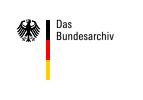
Portal on Forced Labour in the National Socialist State
zur Hauptnavigation zum Servicemenü direkt zum Inhalt
Providing Evidence
In order to substantiate their work as forced labourers, applicants had to produce written evidence to back up their reports. This could be for example a plant ID card, employment record book or any other document indicating an employment. In many cases the parties involved did not have such evidence. The partner organisations made every effort to support applicants in producing evidence through advice and by helping them with their own investigative efforts. In case they failed to produce appropriate evidence that way too, they intented to contact the International Tracing Service of the Red Cross (ISD) in Bad Arolsen.
With a hit rate of only 30 % the result of this three-step approach soon turned out to be unsatisfactory. Consequently, there were numerous uncoordinated individual enquiries of victims and partner organisations to German archives, the processing of which was further complicated through the tedious postal allocation of places deemed possibly appropriate by archivists of providing helpful information.
Since a quick and accurate processing had to be ensured in the interest of the victims, the Federal Archives, the International Tracing Service and the Federal Association Information and Counselling of NS victims took on the task of developing a suitable and coordinated procedure. That way the project “Providing evidence for former NS forced labourers“ initiated the widespread association of archives. The functionality of this association was based on a distribution center, where all enquiries were collected, which had neither been verified by the partner organisations nor the International Tracing Service. Based on the details in the applications they were forwarded to the individual state coordination centres in the individual Federal States according to region-relevant criteria in a standardised electronic form, where they were either processed immediately or forwarded to the regionally or locally operating state and district archives, which likewise responded to the enquiries in a standardised, electronic form. Other public bodies were also involved right from the start, which were also expected to provide relevant records (e. g. “the Hauptverwaltung des Bundeseisenbahnvermögens für die Zwangsarbeiter bei der Reichsbahn“ Head Office for Railway Assets for Forced Labourers at the German Reichsbahn).
Finally, the association of archives was extended to more than 300 German archival establishments – amongst them being some major company archives and the Concentration Camp Memorials in Germany. Through this assocation of archives the hit rate could be raised substantially thus helping many former forced labourers to be eligible for payment.
However, the circumstances of providing evidence was still unsatisfactory for former forced labourers who resided in the successor states of the Soviet Union and who had been deployed in the territories of the Greater German Reich, which are now part of Poland. Although the Polish partner organisations were investigating any evidence for Polish victims in an excellent way, it seemed highly unlikely that they would process any enquiries of Non-Polish citizens with the same enthusiasm.
For that reason the Federal Archives got in touch with the State Archives Poland and the Foundation Polish-German Reconciliation. Following the identification of needs and requirements of a potential expansion of the existing association of archives to include Poland, a distribution office could be established in Warsaw, where all enquiries ended up that were related to Poland as the place of action and hence could not be investigated in any German archive. The 16 Polish State Archives, the Concentration Camp Memorials and the Institute of National Remembrance were involved in the subsequent processing.
Due to the extensive preparatory work of the Polish partner organisations and Polish archivists already having several years of experience in the processing of forced labourer investigations, the initial position for a cooperation was very fortunate right from the start. Under the organisational leadership of the Head Office of State Archives Poland this led to an ideal integration in the electronic evidence system so that the hit rate and thus the number of beneficiaries from Eastern Europe could be raised significantly.
